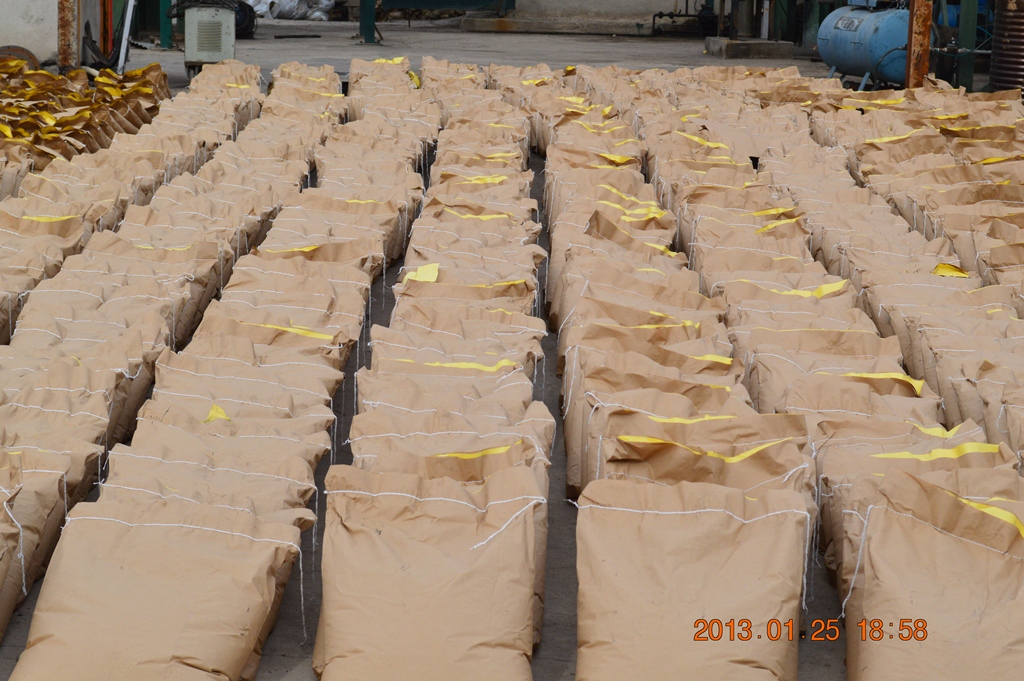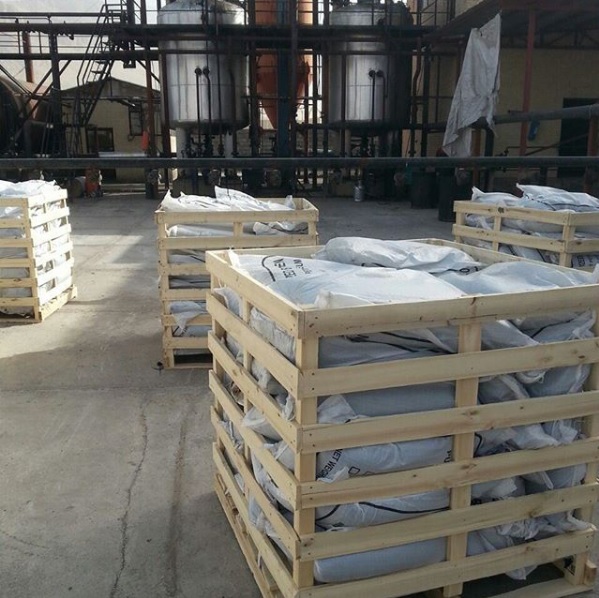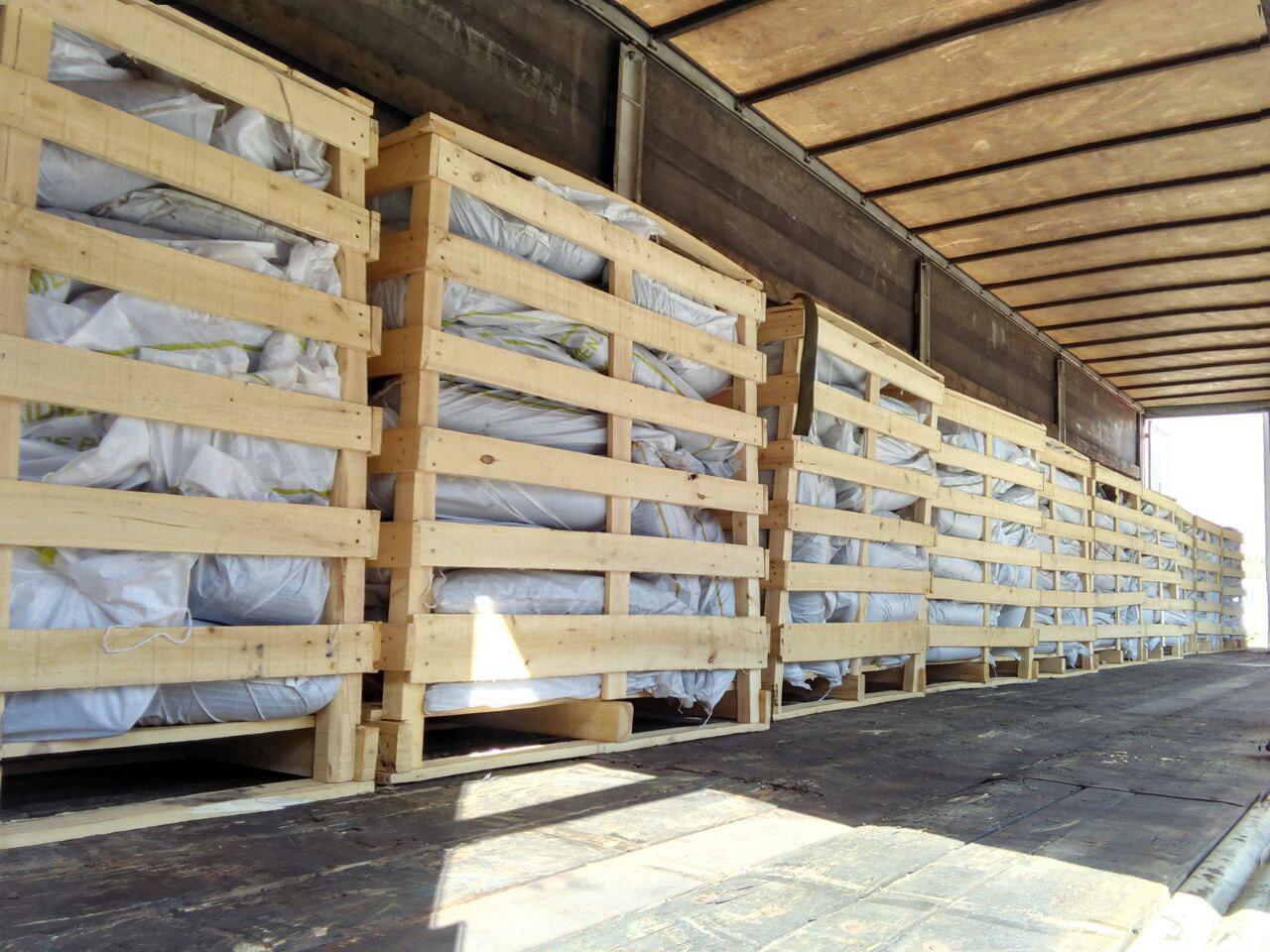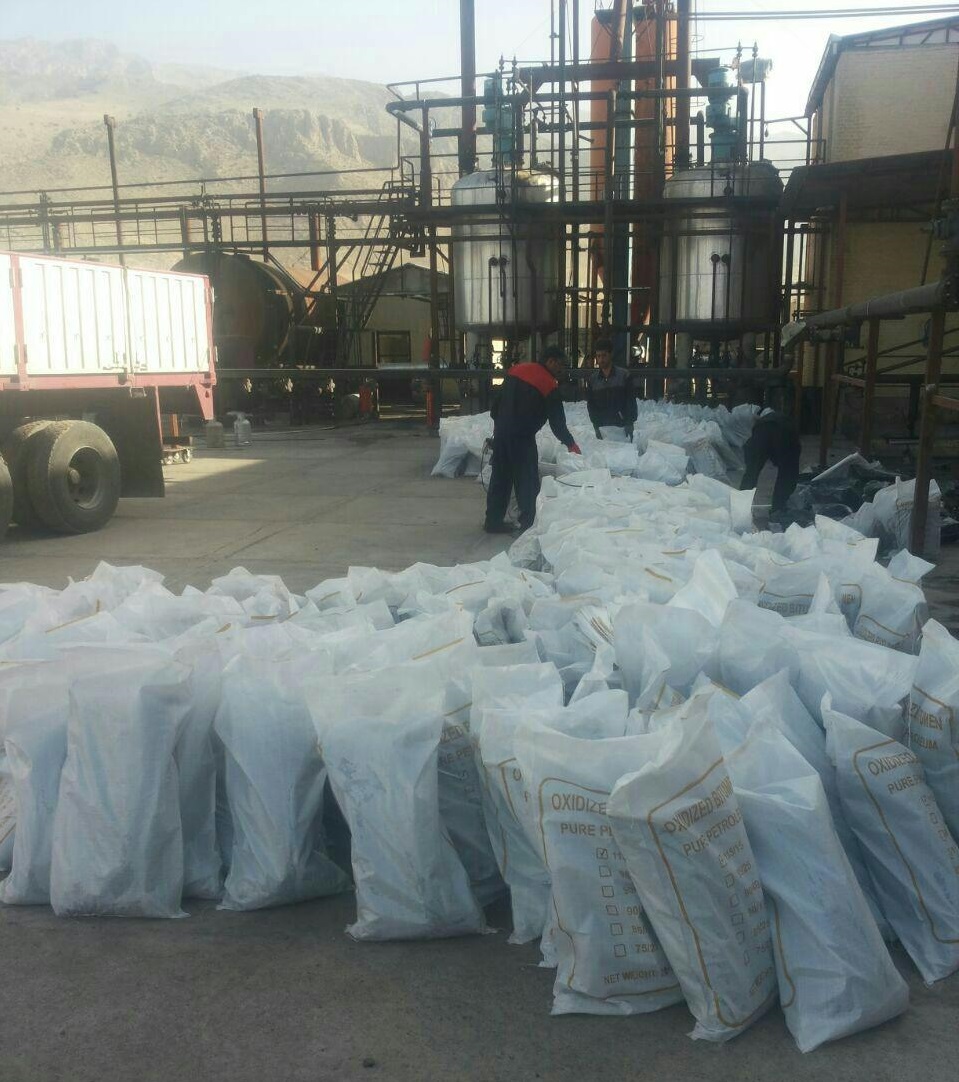Wiki

Oxidized Bitumen
Oxidized Bitumen or Blown Asphalt or Blown Bitumen is produced by either Continuous or Staggered Blowing Process. Heated Penetration Grade Bitumen under controlled environment is blown with air which controls the Oil Content in the Bitumen while it oxidized. The different grades for suited applications produced are designated by two numbers to indicate the mid-points of their softening point and penetration ranges.
This process gives the bitumen more rubbery properties than its original formula and they are simply harder bitumen. Hard bitumen under controlled temperature conditions is widely used as an anti-slip layer compound in the piling industry, for the manufacture of roofing felts, the roofing and waterproofing industries, for sound dampening felts and under carriage sealant in the automotive industry, electric cable joint protection, joint filling compound, sealant compound and many others. Also used in sealing saw cuts and joints where expected movements are minimum. It is also used in the manufacturing of bituminous marine mastic for the oil & gas pipeline joints.
Oxidized Bitumen or Blown Asphalt is produced by blowing hot air into the penetration bitumen. This action makes the bitumen more rubbery than its original formula and it becomes harder bitumen. This bitumen recovery the weight loss under heating. Due to low thermal sensitivity, the softening point is much higher than regular bitumen and the penetration index (PI) is higher than road construction bitumen (8>PI>2) due to the letter has a gel-like structure because of asphalt accumulation. Special physical properties of its grade can be used in different applications in the construction business. Oxidized Bitumen is made by ongoing or Staggered Blowing Process. Heated Penetration bitumen under controlled environment is blown with air which controls oil content in bitumen while it oxidized.
Blown Bitumen is produced by the air-blowing of penetration grade bitumen. This is done at high temperatures, resulting in a material of a much higher penetration index. Blown Bitumen is based on petroleum bitumen which is made by blowing bitumen 60/70 by very hot air. The designation of the Blown Bitumen refers to the midpoint of the softening point acceptance criteria. Oxidized Bitumen is based on petroleum bitumen which is made by blowing bitumen 60/70 by very hot air. In addition, the numbers relate to the midpoint of the material’s softening point and penetration respectively. The softening point value measured by Ring and Ball method as determined by ASTM D36. Also, the penetration value is in 1/10 mm as determined by IP49 or ASTM- D5.
Oxidized Bitumen is a solid or semi-black solid material and gradually liquid when heated. Oxidized Bitumen grades are blown or oxidized Asphalt ‘s which are produced by passing air through soft bitumen under controlled temperature conditions. This process gives the bitumen more rubbery properties than penetration or hard grade bitumens and a variety of uses in industrial applications.
Oxidized bitumen is Blown Asphalt which is exporting in various grades as Oxidized Bitumen 115/15, Blown Bitumen 90/40, 75/25, 85/25, 90/15, 105/35, 150/5, 95/25 and any other grade will produce according to order. RAHA GROUP is a dynamic and multi-faceted limited company actively involved in manufacturing procurement distribution and export of various grades of Oxidized Bitumen. We are structured into focused on oxidization of Bitumen division to serve the different needs of our customers worldwide. We have a long history of supplying Oxidized Bitumen to bitumen factories, asphalt companies, roof insulation companies and membrane sheet manufacture Throughout the world, more than 7 types of bitumen that is produced depend on the type of weather conditions one of them is Oxidized Bitumen or Blown Bitumen, Oxidized Bitumen grades are suitable for sealing saw cuts and joints where there is expected to be the minimum amount of moving in the joint. Their wide temperature range prevents bleeding in high-temperature applications.
Blackgold Co. is also capable of producing other grades of Oxidized Bitumen according to the specifications of individual clients. Some of the major advantages of Oxidized Bitumen are that it is completely water resistant, highly flexible and durable. Further, it is chemically very stable. Oxidized bitumen is a very flexible compound that is not only chemically stable but also a very durable compound apart from being completely water resistant. Lastly, Oxidized Bitumen has some very prominent technical advantages that makes it a very sought after compound in various applications.
RAHA BITUMEN Co. is a Manufacture, Supplier, and Exporter of all grades of Oxidized Bitumen or Blown Asphalt in Melt able Polyamide bags (25 Kg), Carton Box (25 Kg), Kraft Bags (25 Kg), Drums (25 Kg)

The most popular grades are; grades 95/25, 85/25, 90/40, and 115/15. We are also capable of producing other grades of Blown Bitumen upon request by our customers. Oxidized Bitumen high softening temperatures qualify them as the excellent sealant for prevention from bleeding in high-temperature applications. Blown Grade Bitumen shall be broken up into small pieces (for the blown grade in molded cake form) and heated slowly to the application temperature of 220ºC to 230ºC. Oxidized Bitumen is predominantly used in the piling industry as an anti-slip compound for the manufacture of undercarriage sealants in the automobile industry. It is also used as a sealant compound, as a joint filling compound apart from being used in the manufacture of roofing felts and sound dampening felts. Further, Oxidized Bitumen is used in the manufacture of bituminous marine mastic, which is required for the oil and gas pipeline joints. This Oxidized Bitumen is available in different grades like 95/25, 85/25, 75/25, 90/40 and 115/15. Oxidized is also capable of producing other grades of Oxidized Bitumen according to the specifications of individual clients
Oxidized Bitumen Grades are suitable for sealing saw cuts and joints where there is expected to be the minimum amount of moving in the joint. Their wide temperature range prevents bleeding in high-temperature applications. Oxidized bitumen can also be used in industrial applications like roofing, flooring, mastics, pipe coatings, electrical applications to name a few.
Oxidised bitumen " Oxidized Bitumen, Oxidized Asphalt " range is used in the waterproofing industries, for carpet-backing, corrosion protection, acoustic panels and the manufacture of paints, amongst other applications.
Air-blowing: The manufacturing process used to make oxidized roofing asphalts in which air is blown through an asphalt flux. An exothermic oxidation reaction occurs, yielding an asphalt that is harder, more viscous, less volatile, and less temperature-susceptible than the asphalt flux used as the feedstock to the process.
Asphalt, oxidized (blown or air-refined) (CAS number 64742–93–4): Asphalt treated by blowing air through it at elevated temperatures to produce physical properties required for the industrial use of the final product. Oxidized asphalts are used in roofing operations, pipe coating, undersealing for Portland cement concrete pavements, hydraulic applications, membrane envelopes, some paving-grade mixes [AI 1990b], and the manufacture of paints [Speight 1992].
Blowing still: A closed-process vessel fitted at its base with a sparger and used in the air-blowing process to make many types of roofing asphalt.
Coating asphalt: An air-blown or oxidized asphalt used to manufacture roofing materials used in a variety of roofing systems such as asphalt shingles, polymer-modified bitumen roofing, reinforcing and underlayment felts, and roll roofing products.
Modified bitumen: A roofing system based on membranes manufactured by impregnating or coating one or more fabric plies with a straight-run or oxidized asphalt modified using a polymer, usually atactic polypropylene (APP) or styrene-butadiene-styrene (SBS). Modified bitumen systems may be torch-applied or installed by adhesion in hot asphalt or a cold-applied, solvent-based asphalt adhesive (cutback asphalt). Modified bitumen systems are used on low-slope (primarily commercial or industrial) roofs.

Some of the major advantages of Oxidized Bitumen are that it is completely water resistant, highly flexible and durable. Further, it is chemically very stable. Oxidized bitumen is a very flexible compound that is not only chemically stable but also a very durable compound apart from being completely water resistant. Lastly, Oxidized Bitumen has some very prominent technical advantages that makes it a very sought after compound in various applications.
Compared to paving grade bitumen:

Blown grade bitumen shall be broken up into small pieces and heated slowly to the application temperature of 220ºC to 230ºC.

Production process:
1. Bitumen heating to 265-270 °C
2. Transferring melted bitumen to blowing towers
3. Blowing air to bitumen
4. Cooling melted bitumen with water
5. Packing
The procedures for producing oxidized bitumen are as follows:
Catalysis means adding some chemical material during the process In order to decrease the blowing reaction time. For the following reasons:
Technical point and operating conditions of oxidized bitumen are as follows:
The production process of oxidized bitumen is as follows:
The producing operation of oxidized bitumen mainly includes tank loading different steps, bitumen blowing, condenser external gases and packing. So, in the beginning, the loose bitumen shipped to the plant by tanker is transferred to the raw material store tanker. In order to transfer the bitumen easily to the blowing tower, the burner is contrived at the bottom of the store tanker to heat them. It is necessary to say that if the blowing towers are empty, hot bitumen can be uploaded directly to them and blowing operation start. Since the volume of bitumen increases as a result of blowing and it may overflow, the blowing tower is filled up to 70 %. Air injection is usually done when the temperature of material reach to 190-230 °C.
For gradual heating and also pipes filling with the air is entered from the top of the tower and at the bottom, the bitumen dispread monotonously in phase via nozzle then oxidation is done accordingly and the light molecule, volatile gases, and steam are emitted from the top of the tower. Blowing operation is done in the temperature range of 215-290°C but the suitable temperature is between 265 to 270°C. The needed heat is provided by burner contrived at the bottom of the tower. The bitumen reaction is calorific so in order to prevent the explosion danger resulted from temperature increases, the temperature can be controlled by water injection, burner extinguisher and air amount reducing.
Blowing end-point is usually signified by sampling from tower and bitumen properties testing. The blowing operation stops when oxidized bitumen reaches to specified properties. After this in order to fix the final point and depolymerization bitumen got in high temperature. It is necessary to be transferred to the store after packing and presented for sale. It is necessary to say that the produced gas and steam entered the condenser through the pipe fixed at the top of the blowing tower. In this stage, the bad smelling gases and oily and volatile parts are separated from then transfer to sewage accompanied with water. Other unseparated gas parts are emitted from the top of the condenser then transfer to the furnace and burned there. After cooling the blowing oven and reaching them to 150-160°C, all the content of blowing oven which is hard bitumen is able to be loaded and packed. Because of the liquid height in the blowing tower, oxidized bitumen is transferred by specific gravity and there is no need to use the pump. Packing is done in two sections and in 220-liter drum and 35 kg carton. For fast operation (preventing from cooling & hardening) in every section, several taps are fixed so that it can fill specific drum and carton with bitumen at the same time.